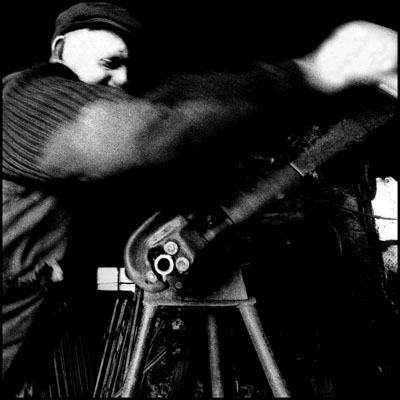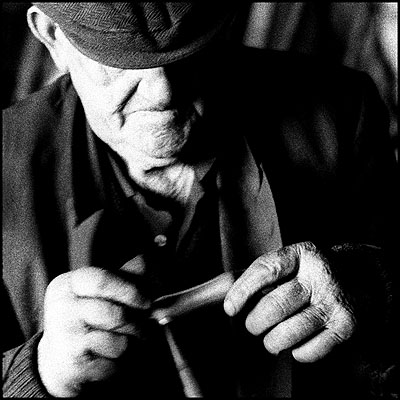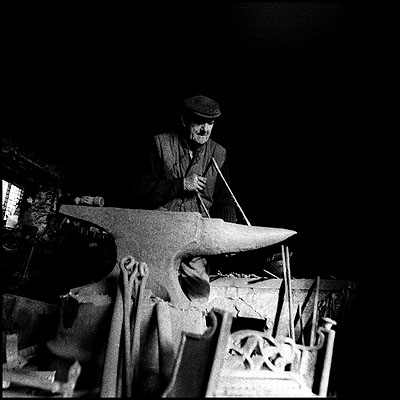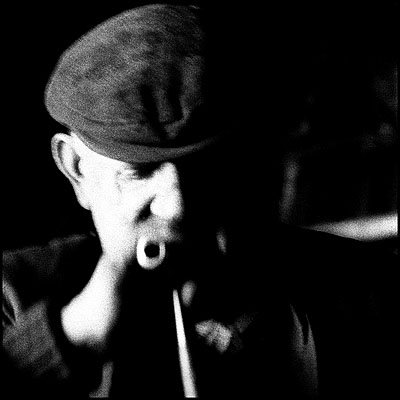
Michael Snoek »
Portraits of the artist as an old man
Exhibition: 1 Mar – 12 Apr 2008
Wexford Arts Centre
Cornmarket
Wexford
+353 91-23764
catherine@wexfordartscentre.ie
www.wexfordartscentre.ie
Mon-Sat 10-18

The village forge has over many centuries been one of the focal points of rural life and up to not so long ago the local 'technology' and 'communication' centre. Certainly all tasks/problems of mechanical nature were brought here, solved usually to the satisfaction of the customers. The range of services the village blacksmiths delivered was legendary. They thrived on peoples trust and confidence in his work, and rural society was as important to him as he was for the community. Over the years technologies and materials have evolved; both have driven and shaped demands and expectations of customers. Certainly the most dramatic change in the last century was the transition from horsepower to combustion engines. Basically within the last fifty years machinery and transport powered by horses disappeared. This and readily available mass produced goods lead to the demise of village forges and their occupants. Their business became less and less viable and as a consequence less attractive to younger blood. While over a transitional period co-existence between new outlets/enterprises and the village forge was possible, the so called realities of life, as e.g. increased demands of craftsmen for a 'decent' working time schedule, holidays and adjusted pay levels, as understandable as they were, signalled the end for the traditional forge. As a consequence communities in the countryside faced another blow to their traditional way of living in loosing a cornerstone of their rural life and autonomy. Only few blacksmiths are left today who can relate their experience, their art, craft and tradition, gained and traded through the centuries, if not millennia, to a next generation. This is the sad end to a long link of skills reaching back right into the early days of civilization. Changes of technologies, change of work and scale of jobs have lead to the formation of engineering and technology centres, who to a certain extent have taken over the services historically looked after by the blacksmiths. Large hardware and DIY-centres cater for much of the other needs traditionally found and catered for in the local forge; pre- and mass-produced goods have replaced individual handmade pieces. Over the last four years of activity in Molloy's forge Michael Snoek has been privileged to take images of blacksmith Johnny Whitty, than in his late eighties, at work. The selection of b&w images will only marginally be able to reflect the range of activities the blacksmiths performs, but mainly intends to capture the character and composure of a craftsman-artist having worked over 70 years for the community. The end of 2004 sadly saw the sale and closing down of Molly's Forge in Ballymitty !

